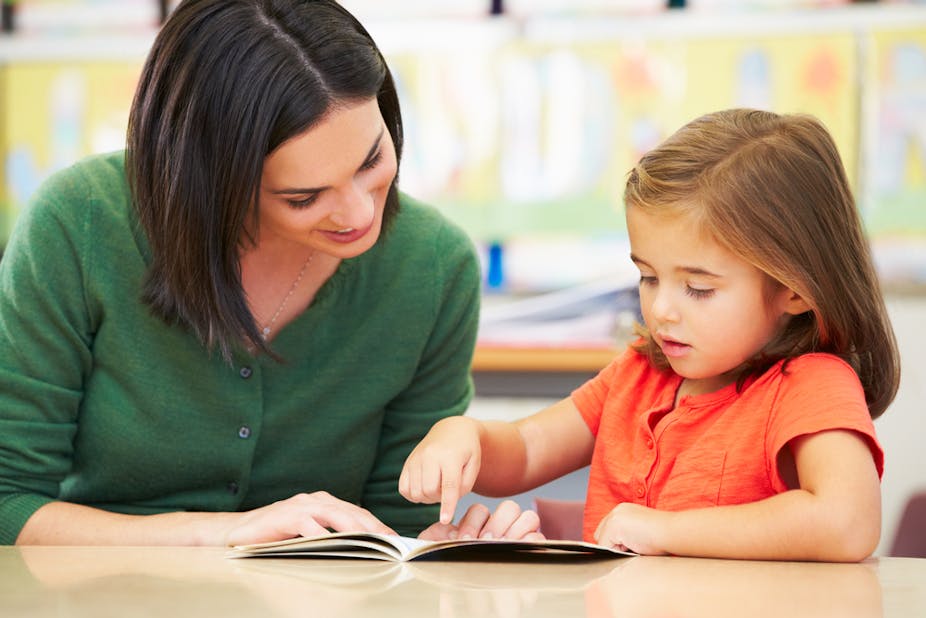In 1982, the late, great NZ reading researcher Marie Clay identified a group of children having difficulty learning to read as “tangled tots (with) reading knots”.
She was referring to children who, despite having no condition that potentially affected their ability to learn, didn’t seem to benefit from reading instruction. She hypothesised that such children “had tangled the teaching in a web of distorted learning which blocked school progress”.
I’ve met many such children (and their teachers) during five decades of anthropological research in hundreds of classrooms. There were also classrooms which either didn’t have “tangled tots” or, if they did, had more success in untangling their “reading knots”.
When I looked more closely at these “non-tangling” classrooms I discovered they had something in common. Their teachers continuously (and subtly) embedded messages about “learning to be an effective reader” in the language they used when teaching reading.
So far I’ve identified the following seven messages.
1. A reader’s major focus should always be meaning
The dominant thematic message effective reading teachers give to students is “sensible, coherent meaning should be the end result of any reading encounter”.
Teachers communicated this in many ways. For example, if children were reading and came to something they didn’t know these teachers would say things like, “What would make sense here?” or “That’s a really good guess because it makes sense. What else would make sense?”
Another teacher, when listening to a reader painfully violate the syntax of English by robotically reading “On (pause) one (pause) little (pause) there (pause) but (pause) some,” responded thus: “You just read ‘on one little there but some’. Does that sound like real language? If someone said that to you would it make sense? Why? Why not?”
2. Effective readers draw on all sources of information in the text
This was another dominant message in these classrooms. These teachers constantly asked questions or made comments that promoted this behaviour. Here are some examples:
- Semantic information:
“Go back and read the title. Often that will give you a clue about what makes sense here.”
“Think about what you already know about the topic and ask, ‘What makes sense?’”
“Use the story line plus any pictures and ask, ‘What would make sense?’”
- Syntactic information:
“Use your ‘feel’ for the way the English sounds and ask, ‘Does this sound right? Does this sound like English?’”
- Graphophonic information (the relationship between letters and sound):
“If you think the word you’re stuck on is ‘horse’, use your knowledge of letter shapes and sounds and ask, ‘Does ‘horse’ look right?’”
3. Effective readers are always predicting
These teachers constantly encouraged young readers to predict from the title or any illustrations in the texts they were reading.
“What do you think might happen in this text? Does that make sense? Why? Why not?”
4. Effective readers self-correct
This a by-product of the first point. Here’s an example of how these teachers communicated this message.
Text: Father got up at seven o’clock.
Child: Feather got up at seven o’clock.
Teacher: “You just read ‘Feather got up at seven o’clock.’ Does that make sense? What would make sense and looks like ‘feather’?”
5. Effective readers have a range of strategies
My data show these teachers continually said things like:
“When I’m reading and I come to something I don’t know, I read ahead to see if I can get some clues about the bits that are troubling me.”
“If that doesn’t work, I might leave it out all together, finish the text and then come back to it.”
“Sometimes I go back to the beginning of the sentence I‘m having problems with and try again.”
“I ask somebody, ‘What does this say?‘ ”
“If none of these work, I might try to sound it out. I don’t spend too much time sounding words out because it slows me down and I forget what I’ve read.”
6. Effective readers know how they read
My data shows that these teachers used every opportunity to draw their students’ attention to the meta-cognitive aspects of reading. For example:
A student is selected to try to read a message on the board. As the selected student focuses on the print the teacher comments, “I know what Emily’s doing — she’s reading the message silently to see what the words say inside her head.”
A student is reading the class calendar to work out when she’s supposed to present at “Show and Tell” and says, “It’s my turn next Thursday.” The teacher overhears this and comments, “What clever reading. Tell the class how you worked that out.”
7. Effective readers love reading
These teachers continually played the role of “Book Whisperers” by:
Sharing enthusiasms about books.
Sharing stories about their own learning-to-read journey.
Immersing children in worthwhile children’s literature by reading aloud to them every day.
These teachers seem to know intuitively that making meaning is the core business of learning how to read. In this they are like parents teaching children how to talk.

